mark-carlile.com | home
7/1
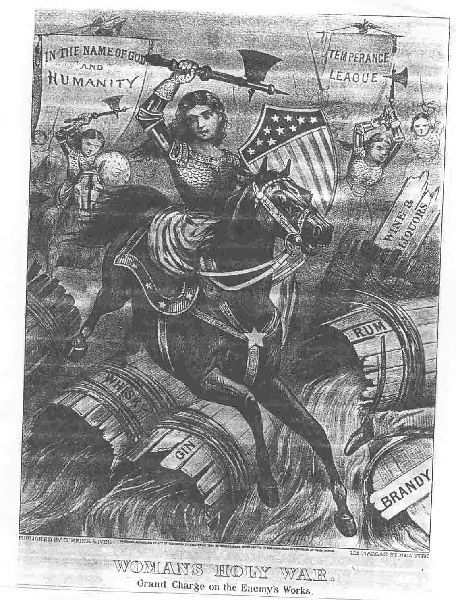
Prohibitionists attacked the saloon (sometimes literally) in an attempt to reform society

The West
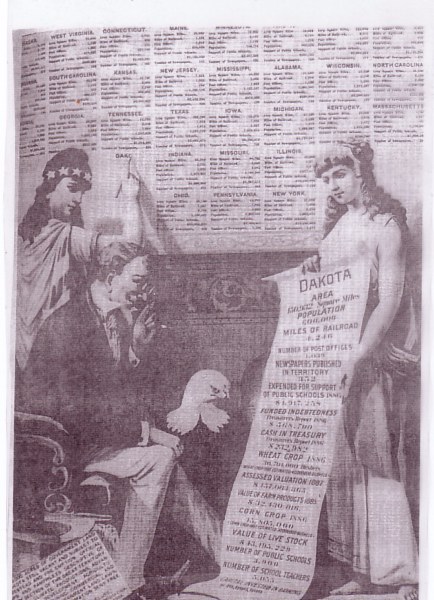
Dakota Territory "applies" for statehood

A railroad ad offering "right-of-way" land
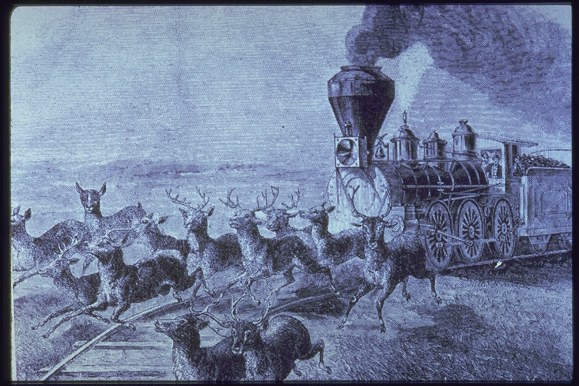
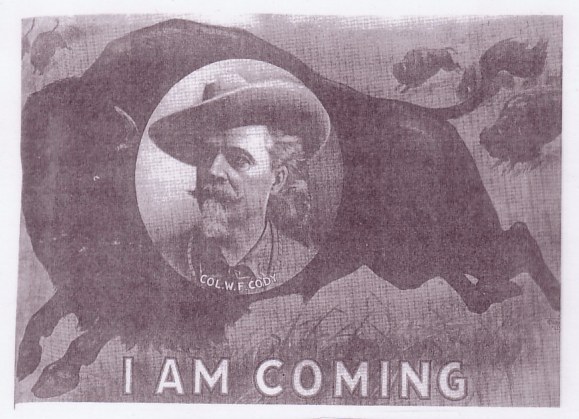
The railroads and the expansion of settlement cleared the wilderness away, as Buffalo Bill's Wild West Show preserved it for eastern audiences
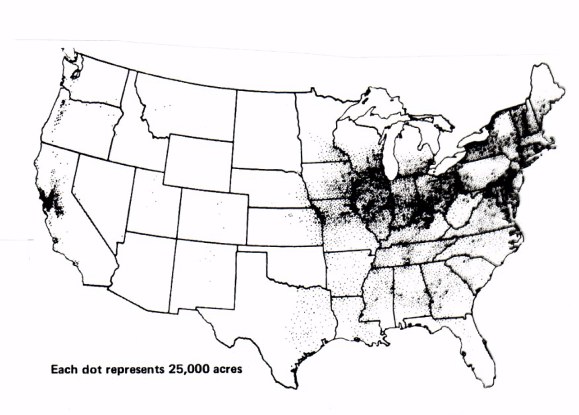

Acreage under cultivation, 1880 and 1900
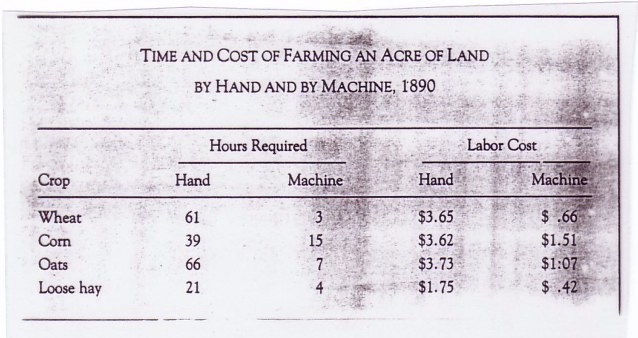
Farm machinery made for greater productivity and enabled farmers to cultivate more acreage
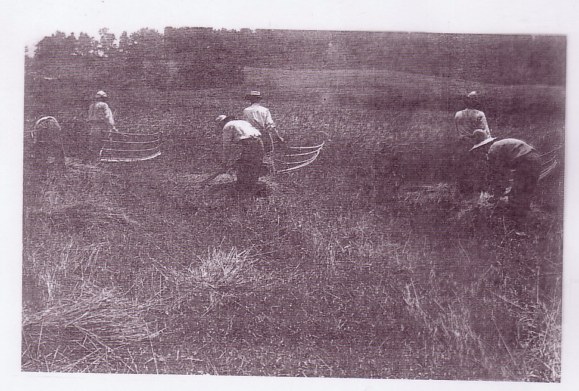
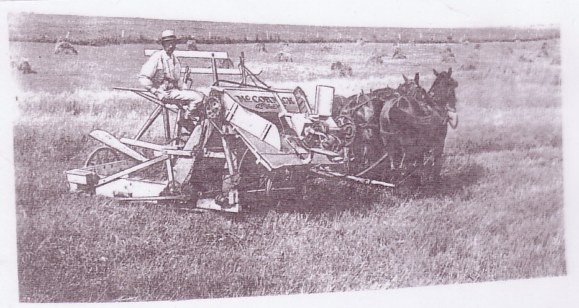
Before and after-- reaping by hand and using the McCormick reaper
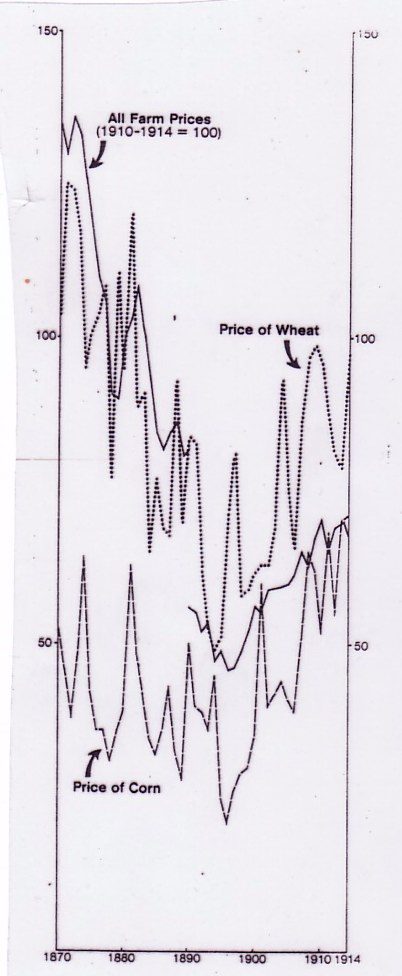
Farm prices declined steadily in the Gilded Age
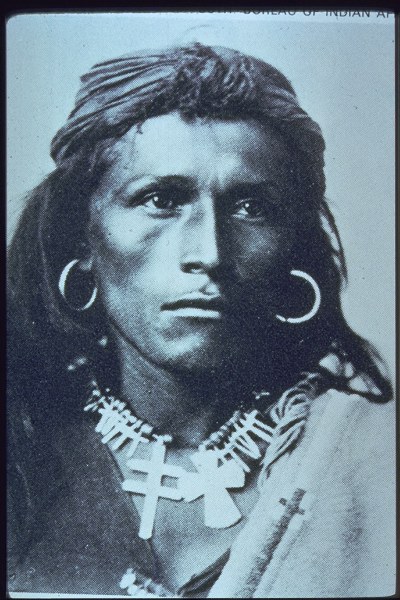
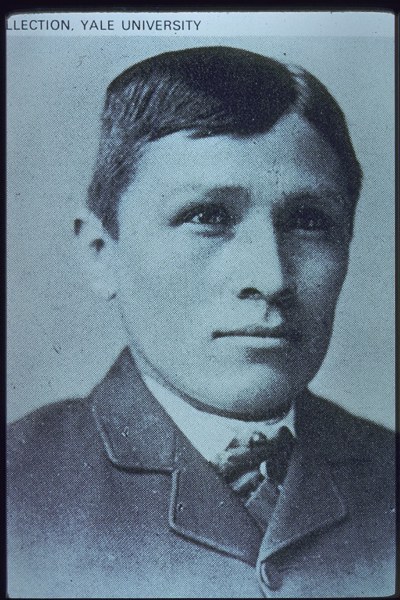
Before and after-- a young Native American transformed in appearance by the Carlisle Indian School
6/29
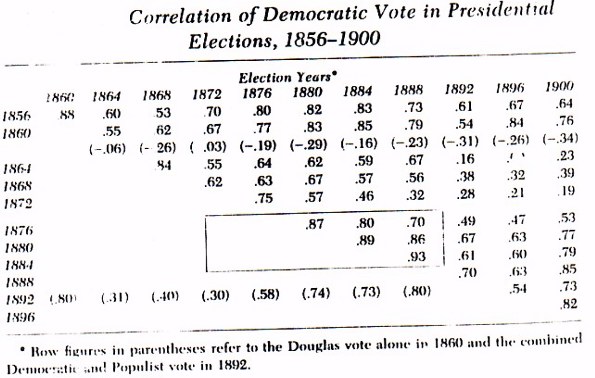
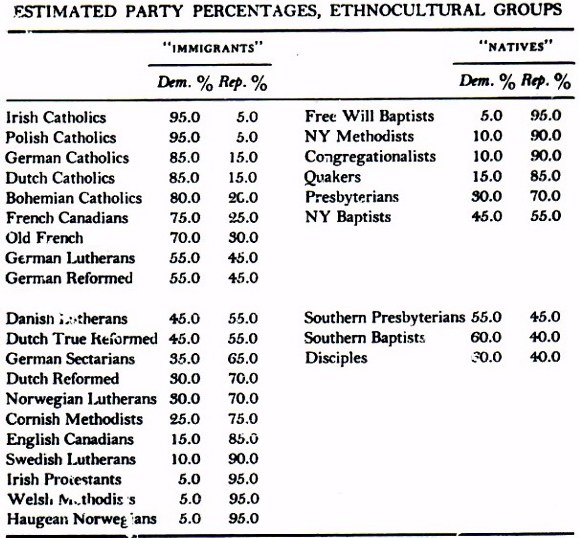
Statistical study suggests that election coalitions in the Gilded Age were stable, and that "ethnocultural" divisions often determined voting behavior
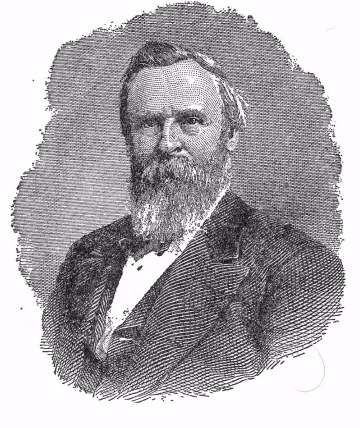
President Rutherford Hayes
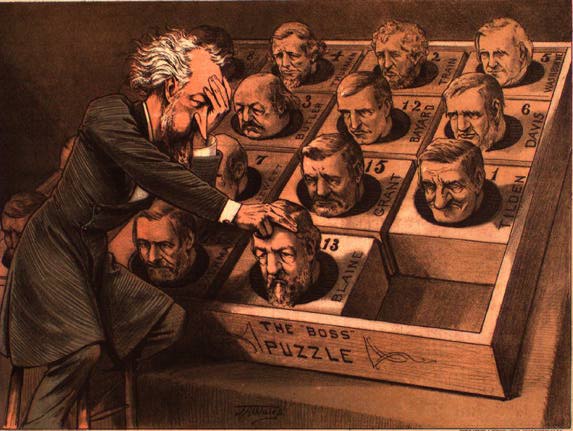
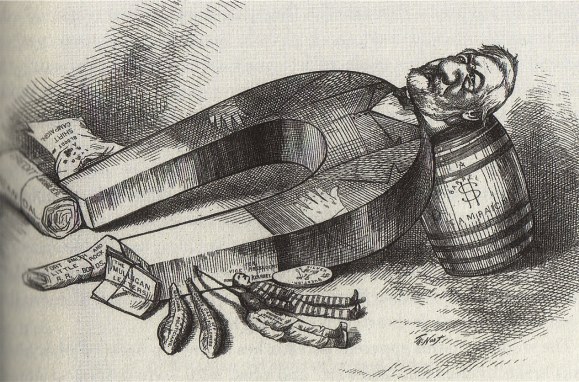
Factional leaders of 1880-- Stalwart "Boss" Roscoe Conkling and "Half-Breed" leader James Blaine

After defeat at the 1880 convention, Grant "surrenders"
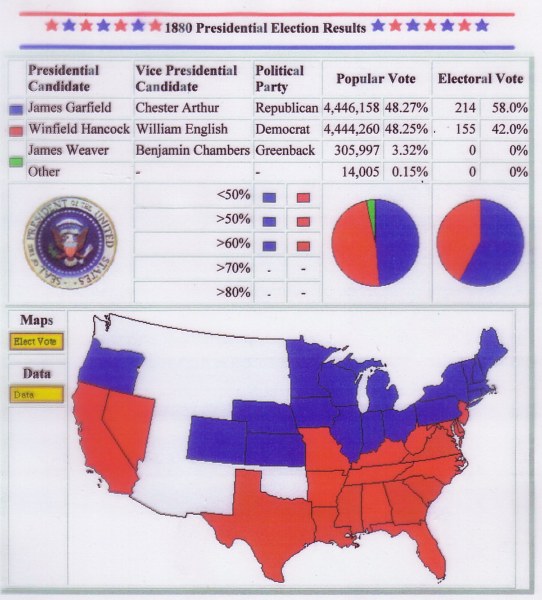
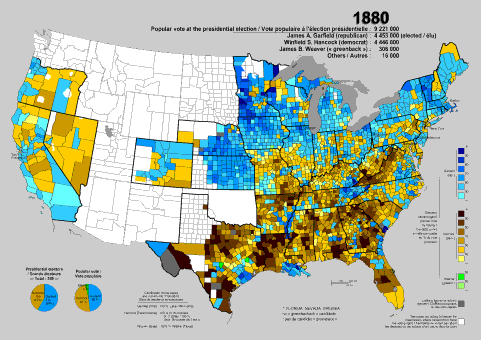
The 1880 election, and the county-by-county results (Garfield in blue, Hancock in yellow/brown)
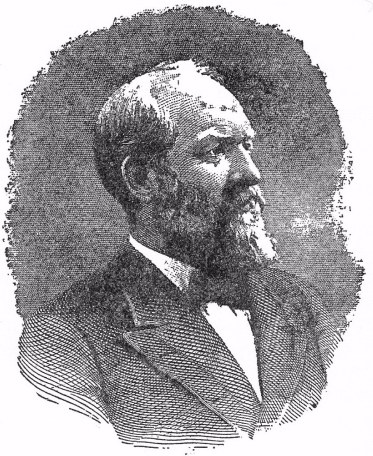
President James Garfield
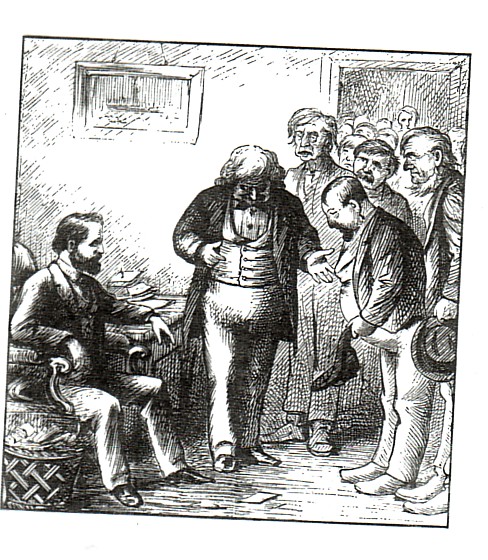
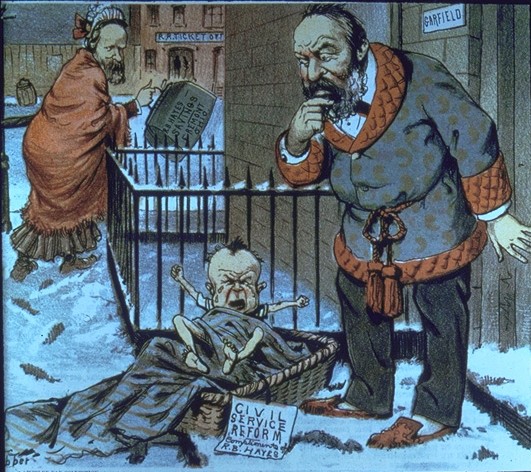
Applicants seeking jobs under the "spoils system", and a cartoonist's view that Hayes had "abandoned" the civil service issue on Garfield's doorstep
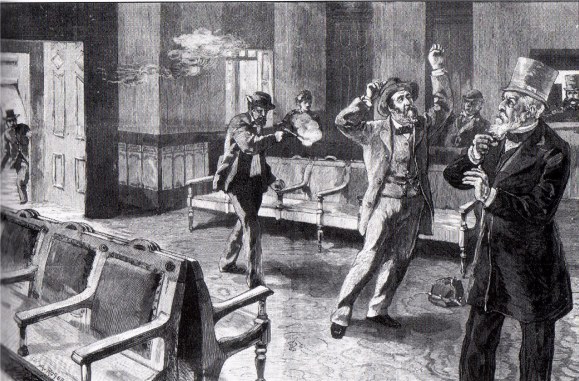
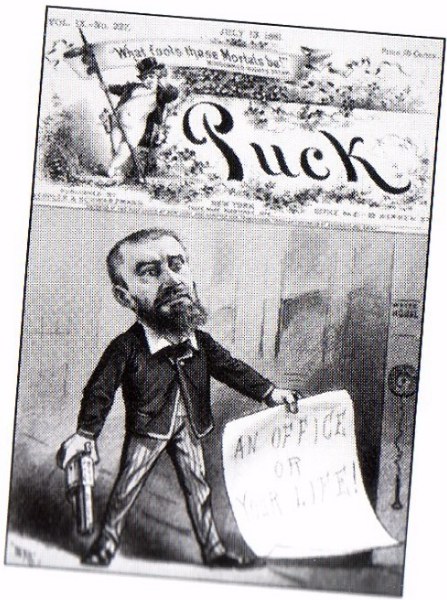
A depiction of Garfield's shooting, and a view of Guiteau, Garfield's assassin
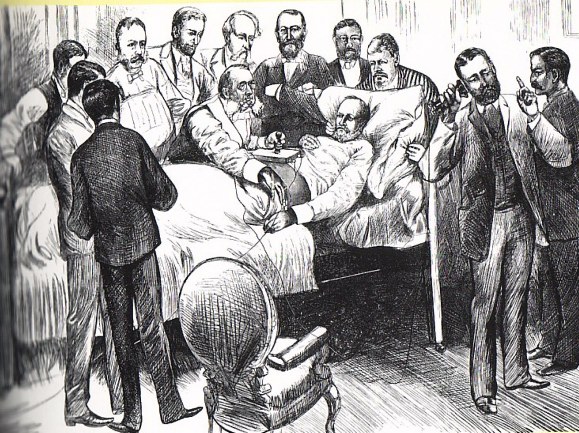

Doctors attempting to find Garfield's bullet, and a view of Garfield's last days
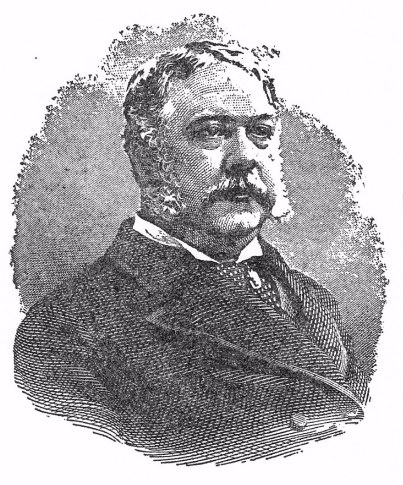

President Chester Arthur, who impressed many by isolating himself from old political cronies
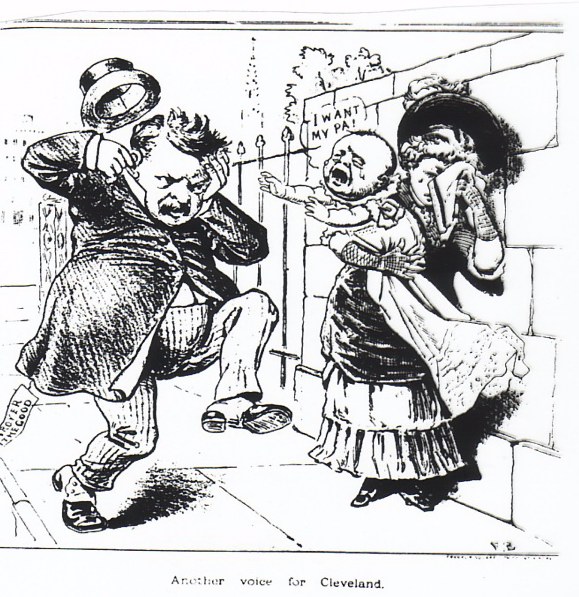
"Another voice for Cleveland" after the revelation of the candidate's personal life
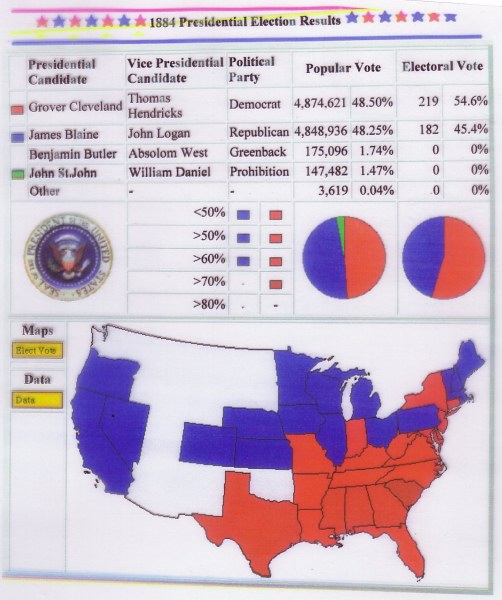
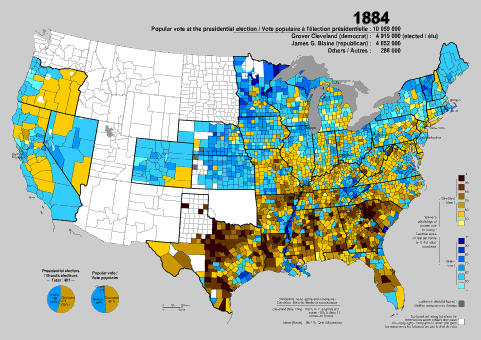
The 1884 election, and the county-by-county results (Blaine in blue, Cleveland in yellow/brown)
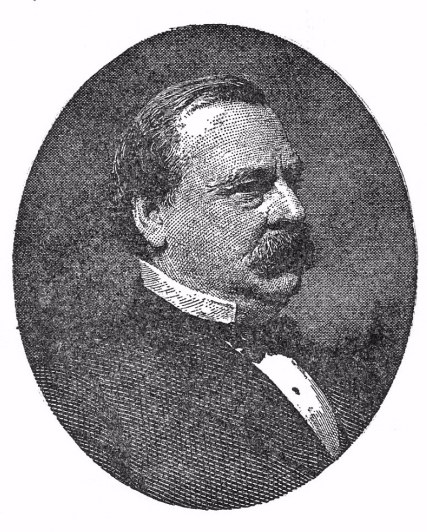
President Grover Cleveland
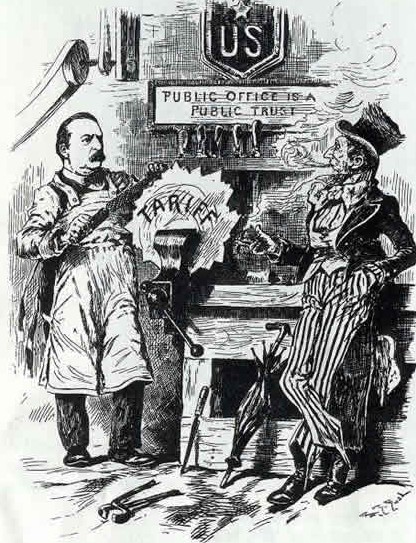
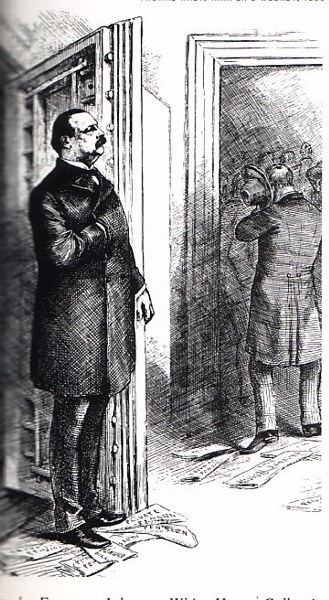
In office, Cleveland considered tariff reform and zealously "guarded" against extravagant military pensions
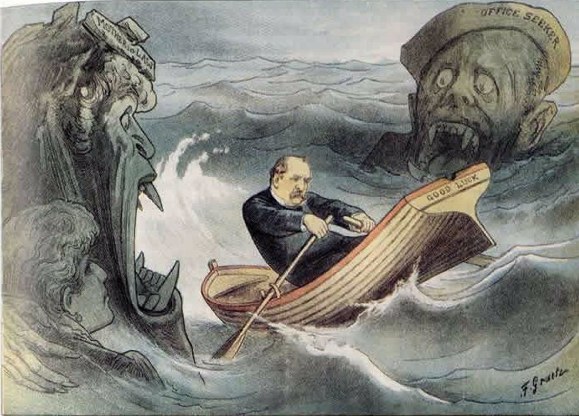
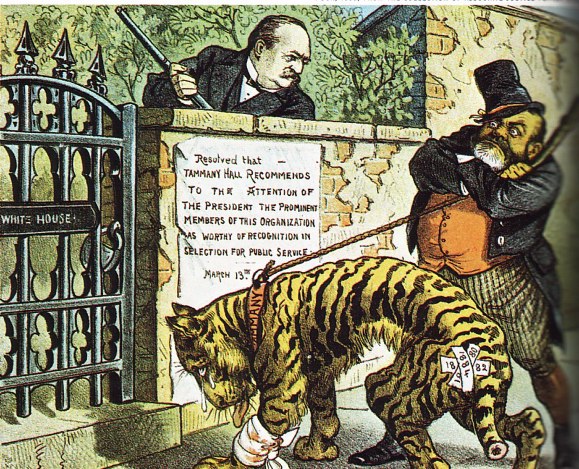
Cleveland appeared incorruptable, and made a show of shutting out Tammany hall influence
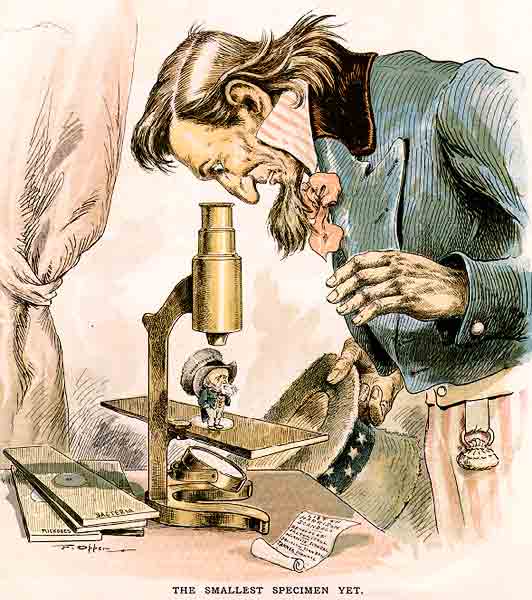
Benjamin Harrison was often depicted as "smaller than life" in cartoons
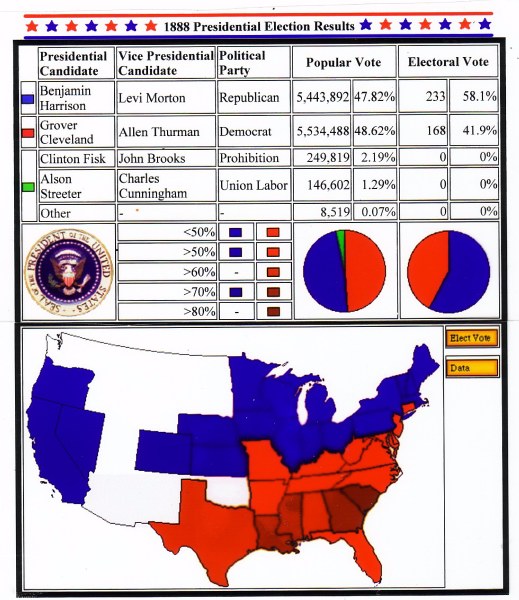
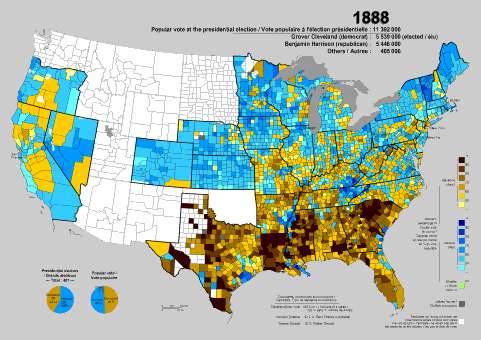
The 1888 election, and the county-by-county results (Harrison in blue, Cleveland in yellow/brown)
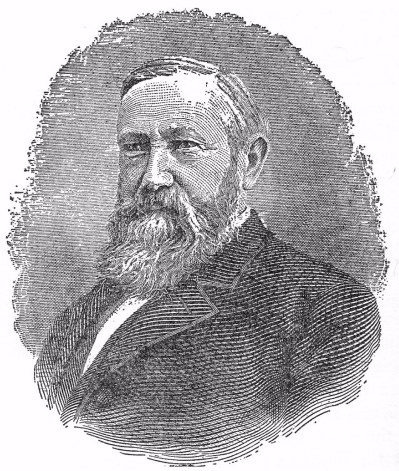
President Benjamin Harrison
6/24
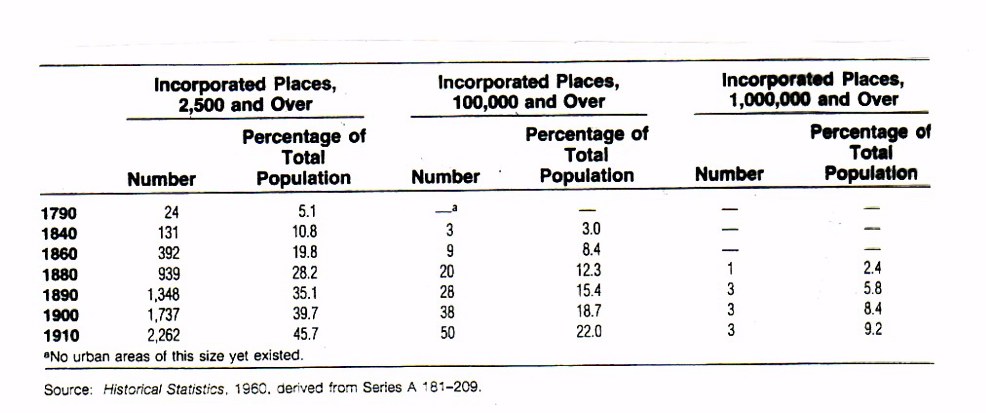
Statistics on urbanization

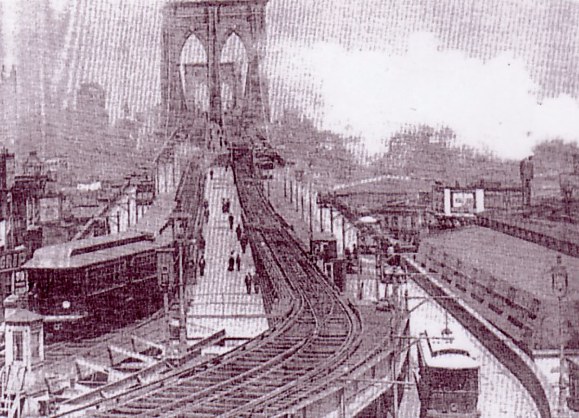
The effective boundaries of the city expanded with railroads and urban streetcars
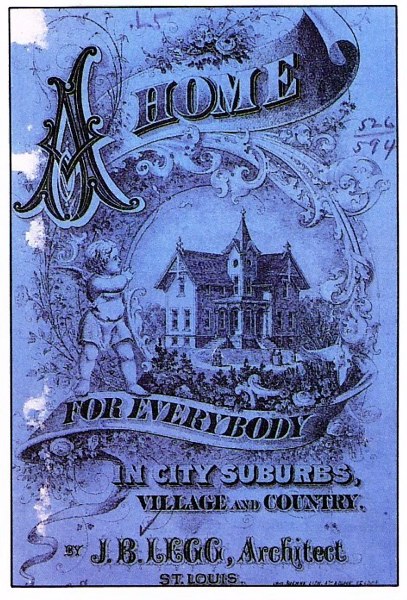
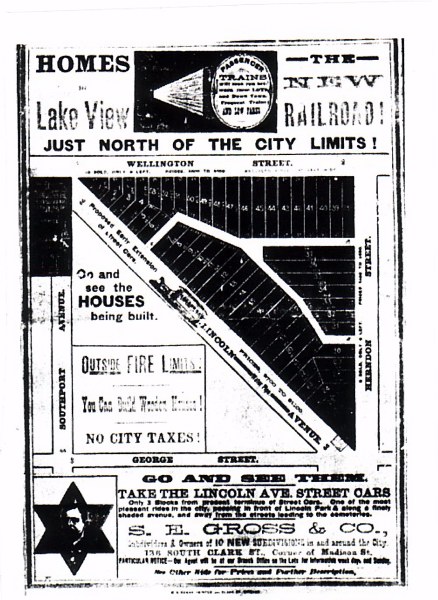
Homebuilding outside of the traditional city boundaries was attractive for both aesthetic and practical reasons
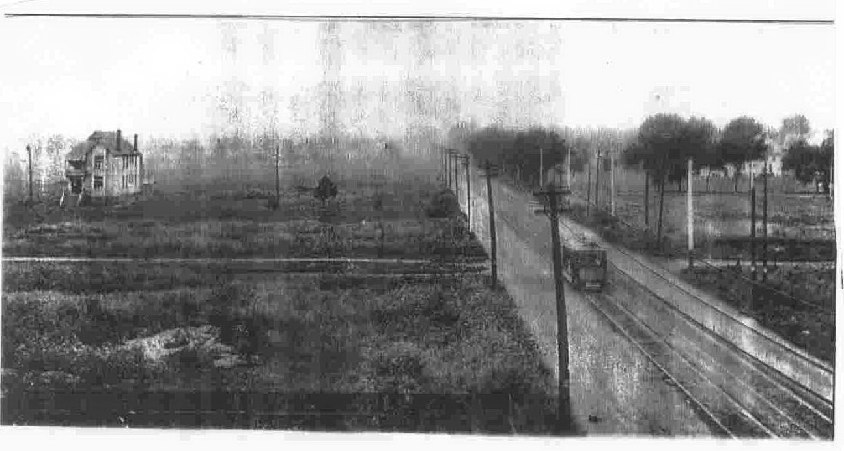
Sururban developments grew up around streetcar lines
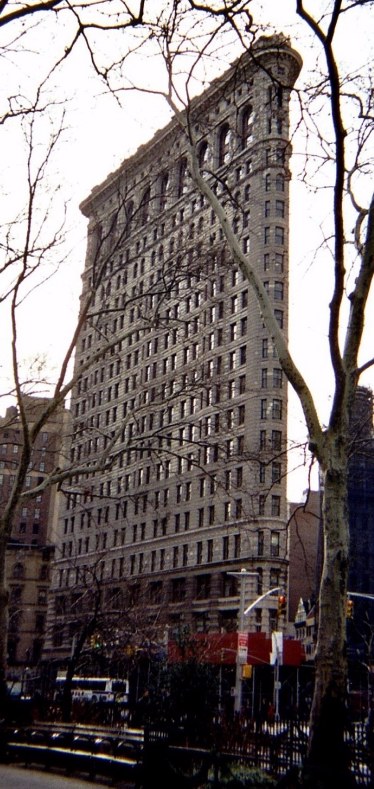

Symbols of the new city-- skyscrapers (the Flatiron Building) and rail stations (Penn Station)
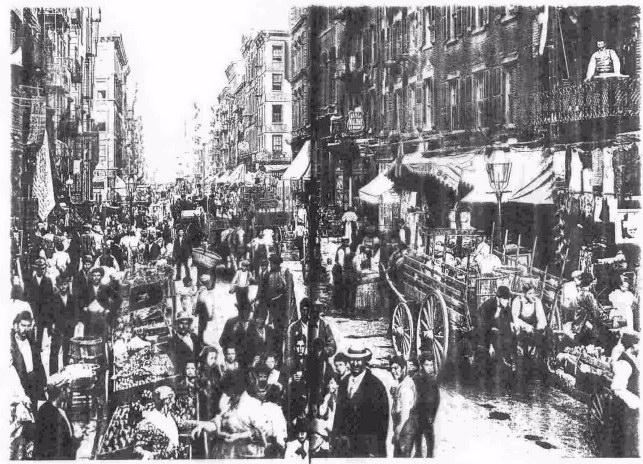
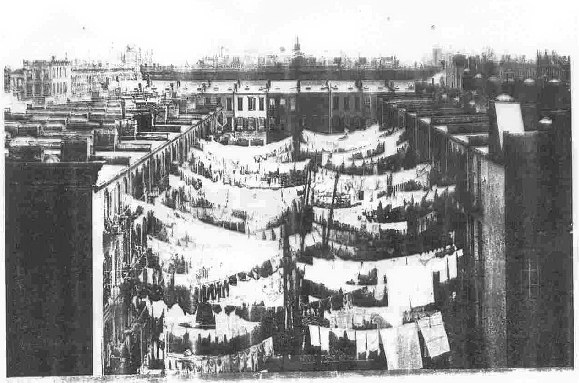
Conditions in inner-city neigborhoods and tenements were crowded and unhealthy
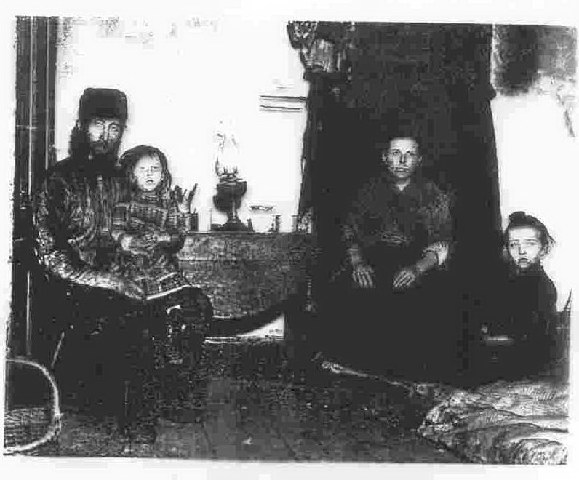
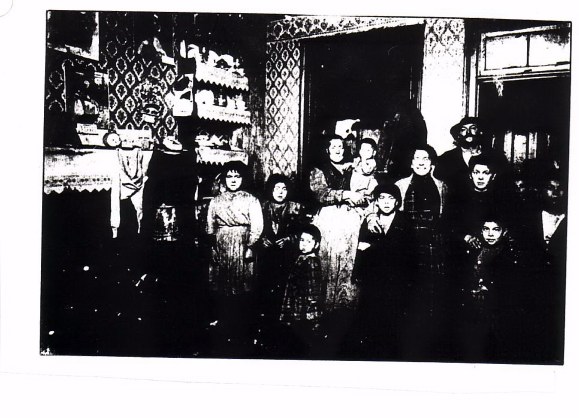
Images from How The Other Half Lives
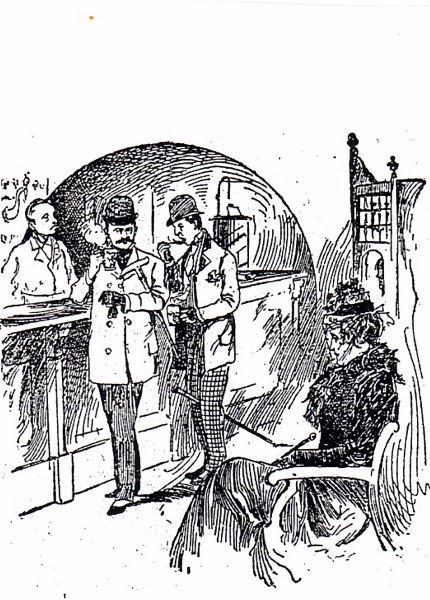
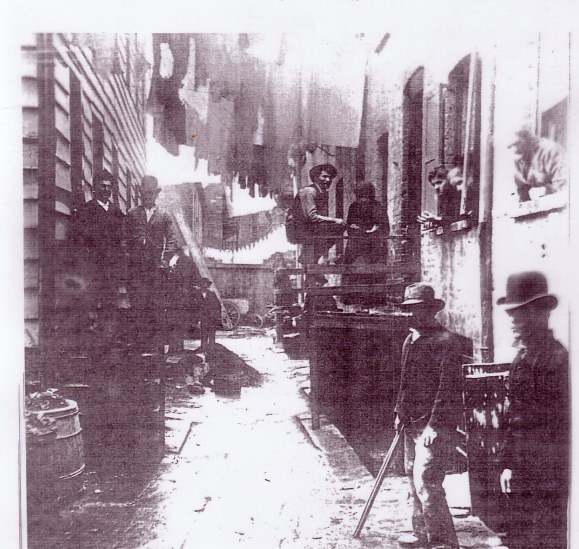
Warnings of urban dangers-- prostitution and crime
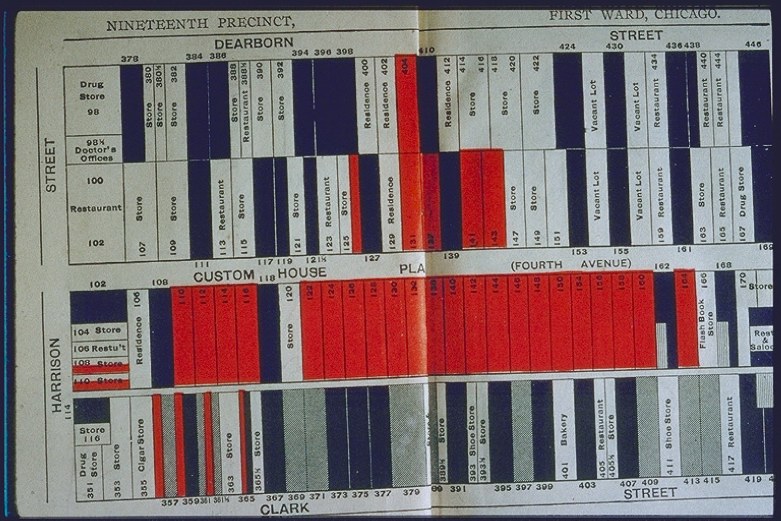
A map supposedly highlighting dangerous areas of the city
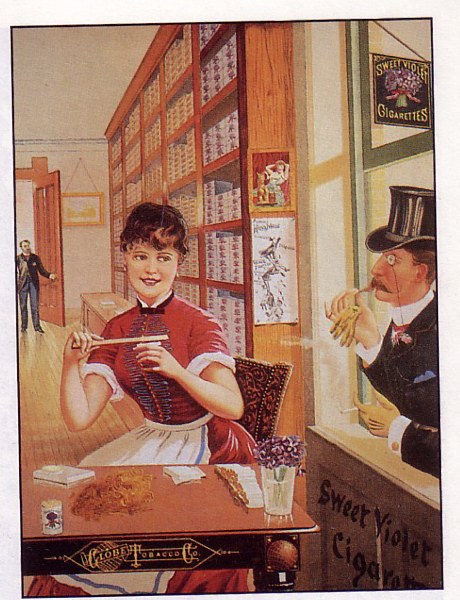
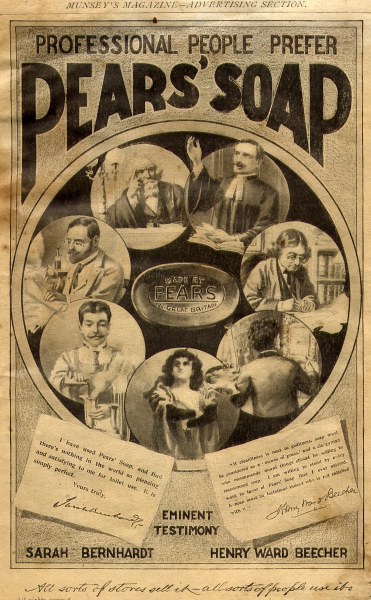
Advertising of the Gilded Age-- selling cigarettes and soap
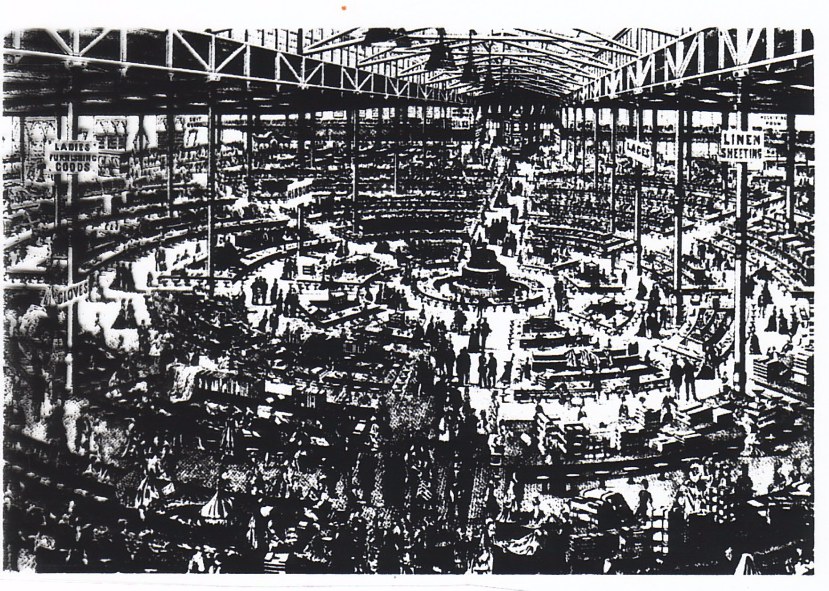
The interior of an early department store
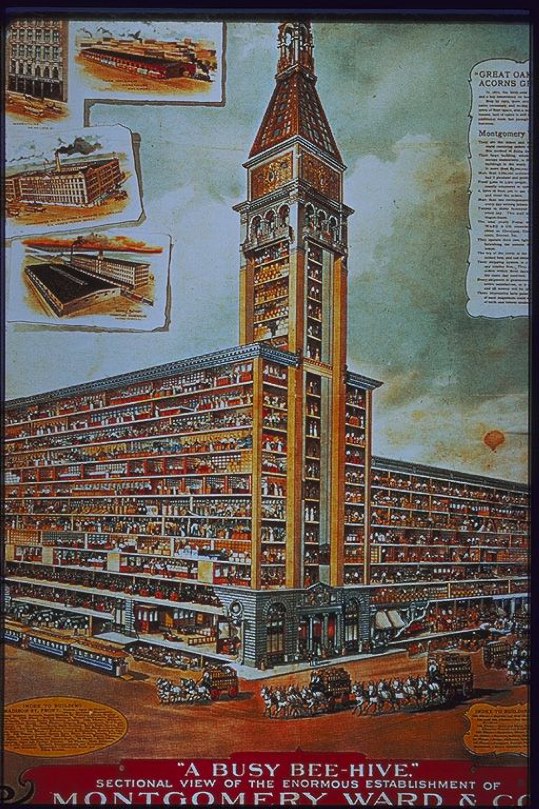
"A busy bee-hive"-- a depiction of the inner workings at the Montgomery Ward catalog's headquarters
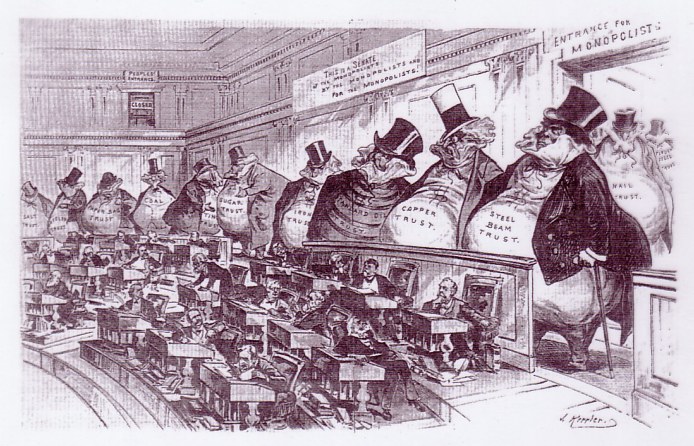
A popular view of Gilded Age politics-- the Senate "Millionaire's Club" controlled by the trusts
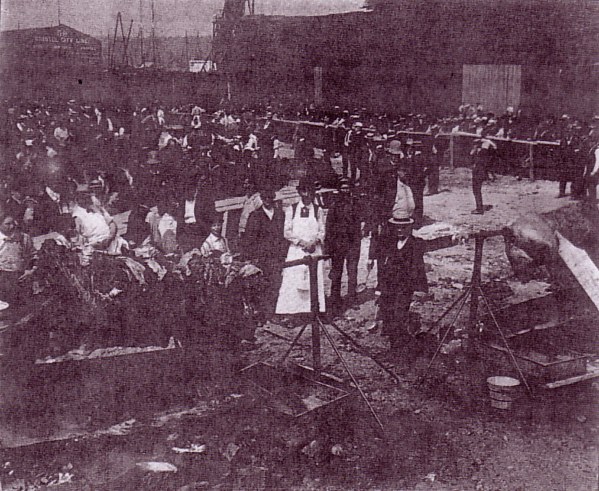
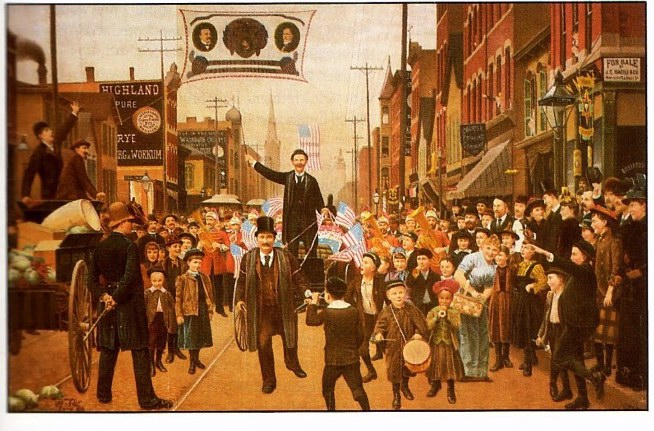
Grassroots politics-- a BBQ hosted by the neighborhood political "machine", and a member of the losing political party pays off a personal bet
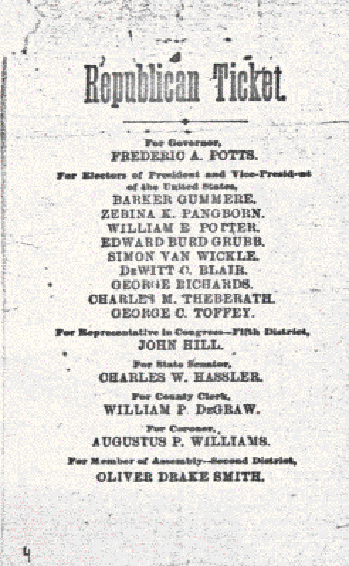
For most of the Gilded Age, election ballots were printed by and provided by the parties themselves
6/22
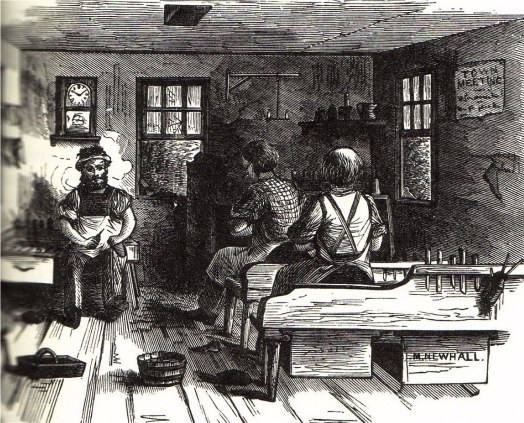
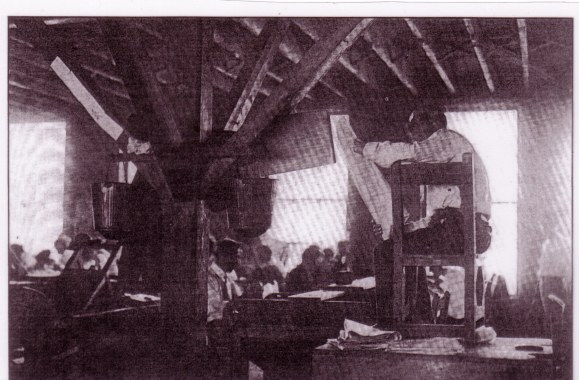
In the "workshop" era-- "ten-footers" were a common place of employment, and some shops maintained the practice of hiring "readers"
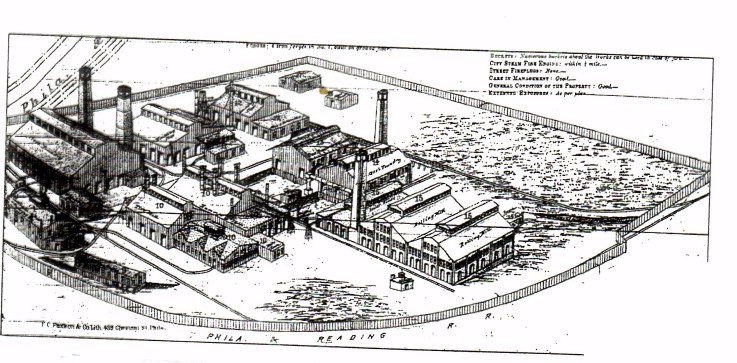
An example of the new "factory" system
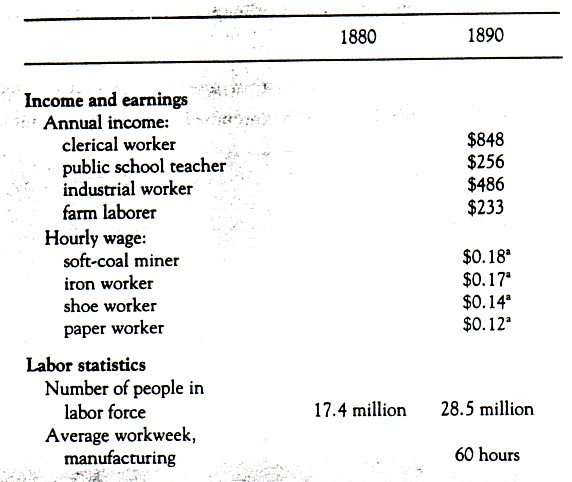
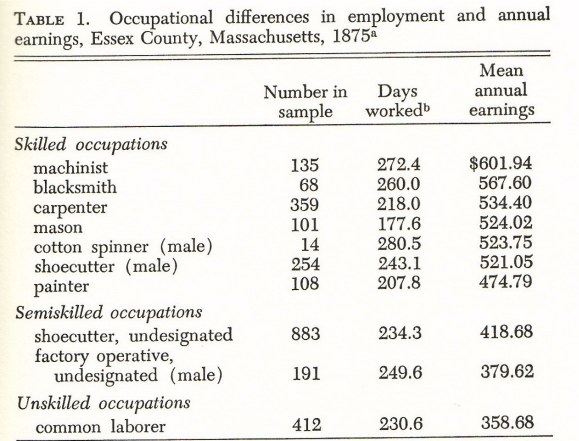
Labor statistics from the late 19th century
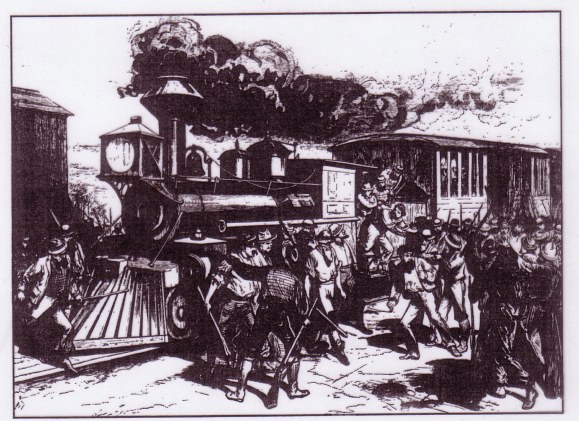

The Railroad Strike of 1877-- strikebreakers are confronted, and damage to railroad property often resulted

An illustration of the militia attacking a crowd of strikers in Pittsburgh
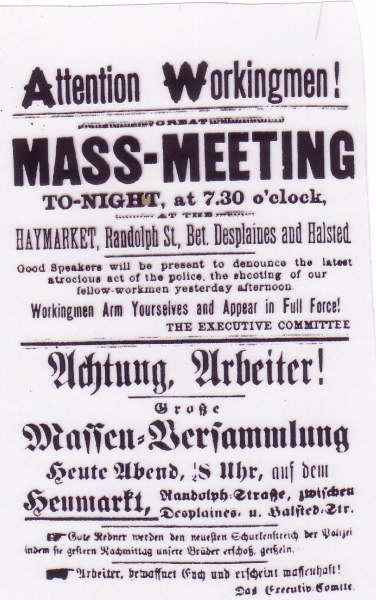
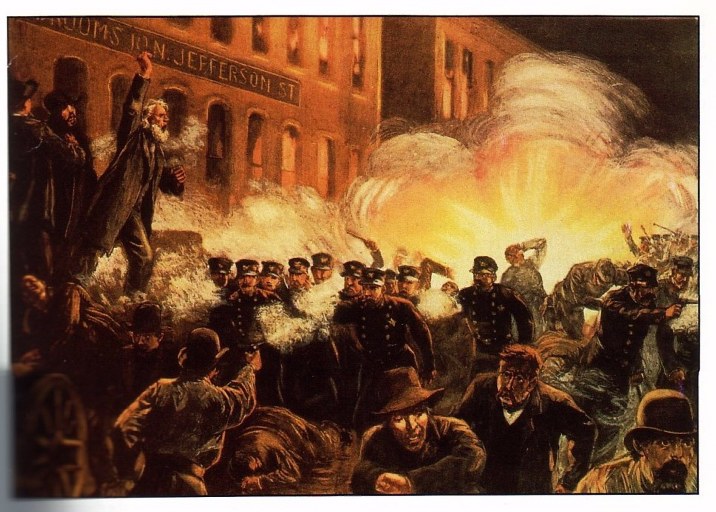
A handbill announcing the gathering at Haymarket Square, 1886, and an artist's depiction of the bomb exploding in the crowd
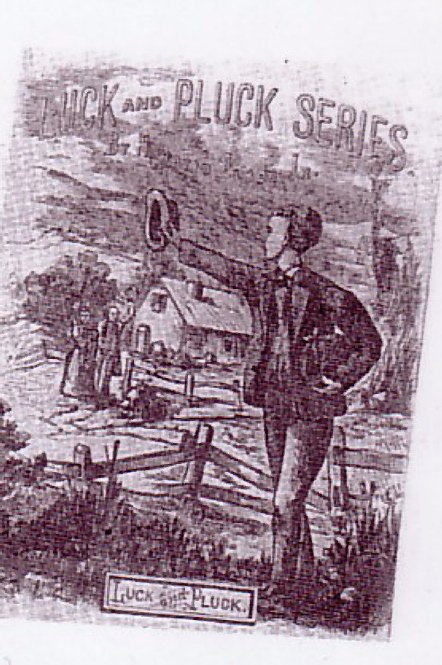
Horatio Alger stories promoted the possibility of social mobility, but also stressed the role of "luck"
6/17
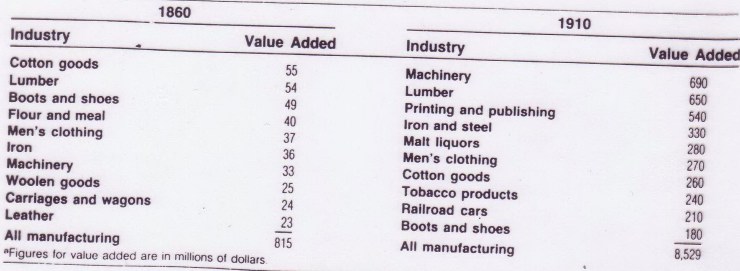
Industrial growth, 1860-1910
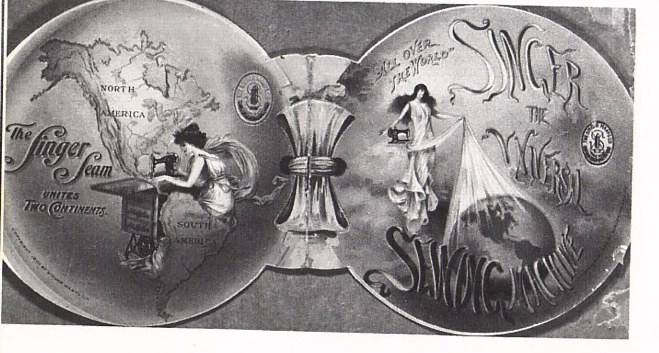
Companies such as Singer expanded their operations both nationally and worldwide
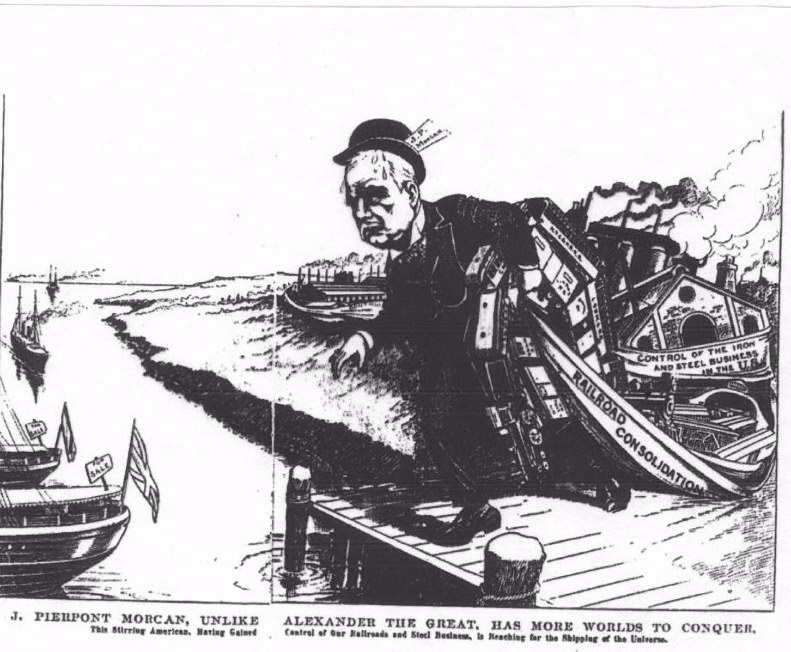
J. P. Morgan, a financier and "robber baron" of the Gilded Age
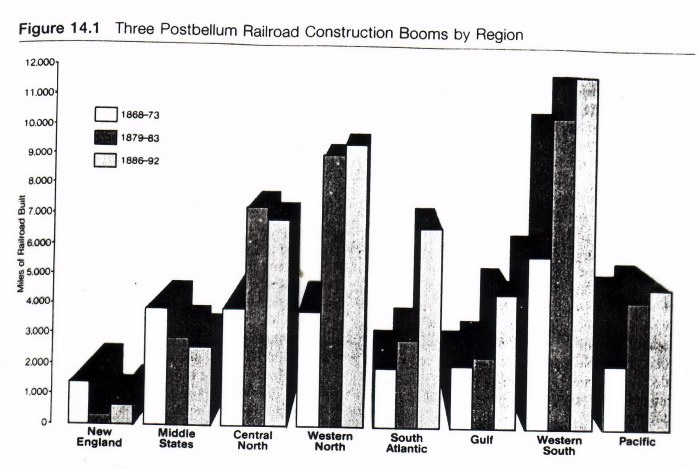
Railroad growth in the Gilded Age built a national network of rail coverage
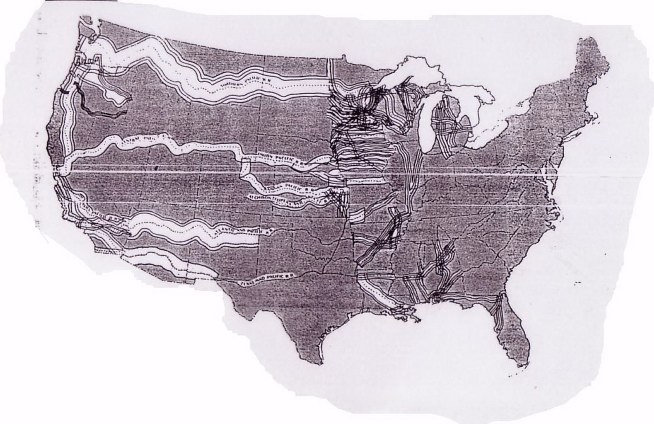

Railroads received land grants from the government, and sold land directly to the public
6/15
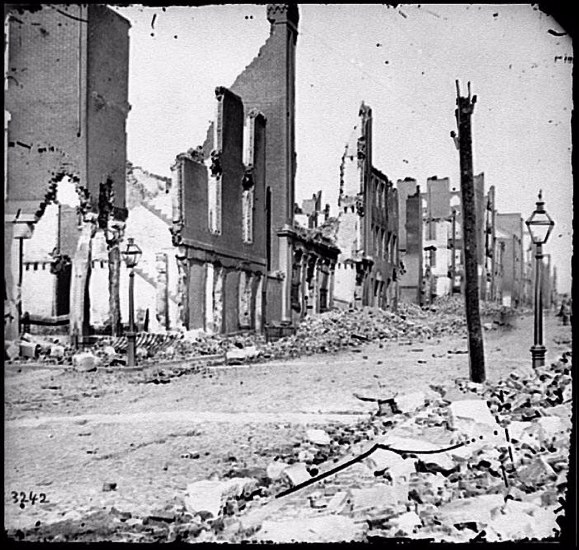
The South in ruins at the end of the Civil War, 1865
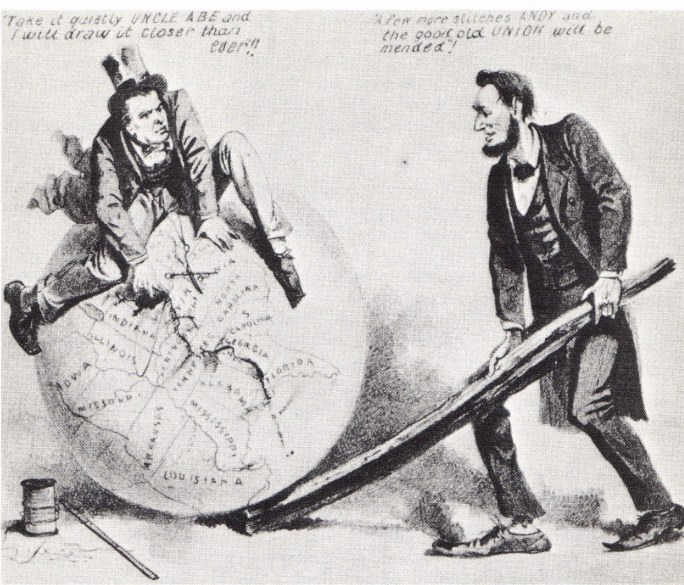
A cartoon featuring the Lincoln-Johnson ticket, 1864
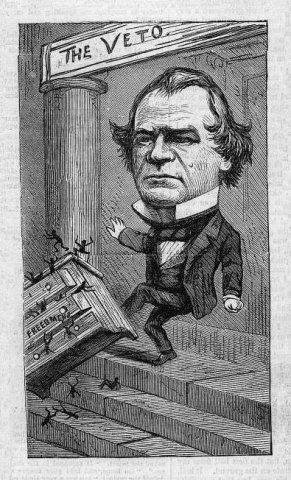
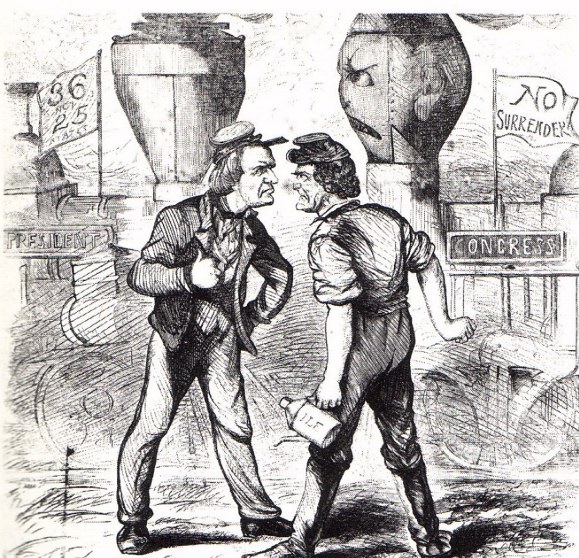
Acts such as the veto of the Freedmen's Bureau legislation put Johnson on a collision course with Congress
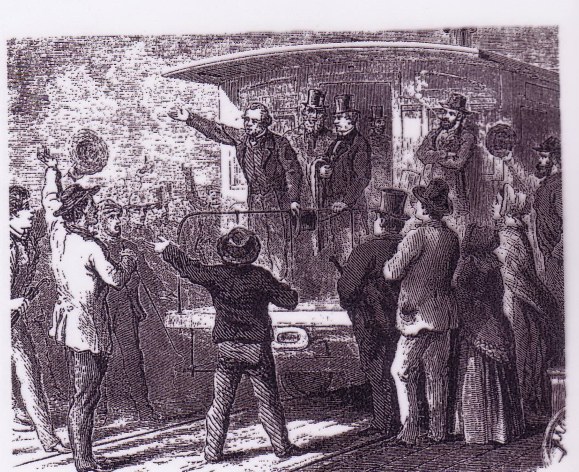
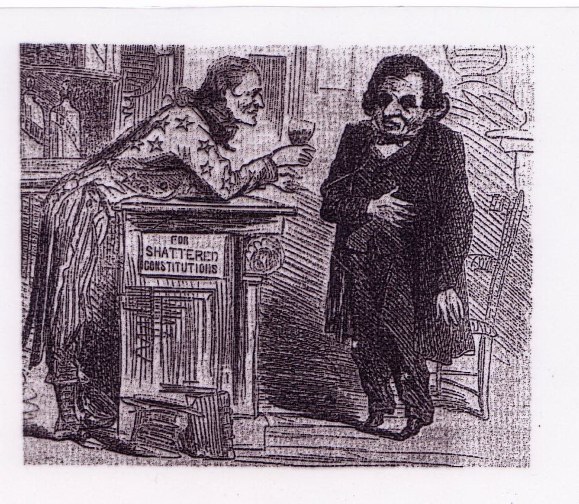
After the disastrous "swing around the circle" in 1866, losses in the Congressional elections forced Johnson to "take his medicine"

"Military Reconstruction"
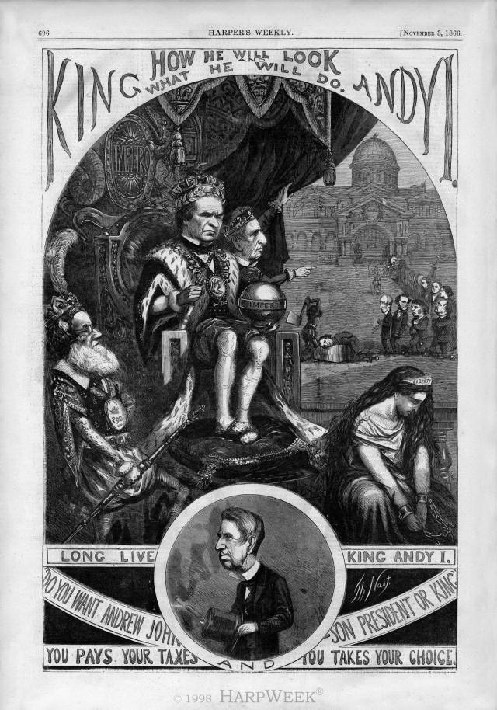
Mocked as "King Andy", Johnson was impeached and nearly removed from office in 1868

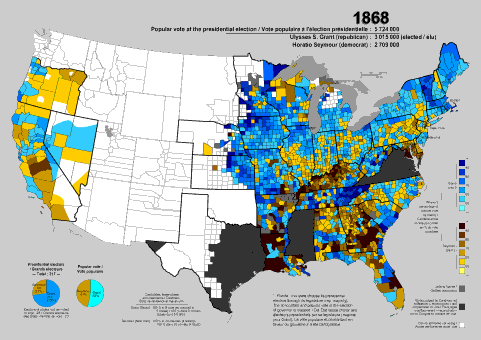
The 1868 election, and county-by-county results (Grant in blue, Seymour in yellow/brown)
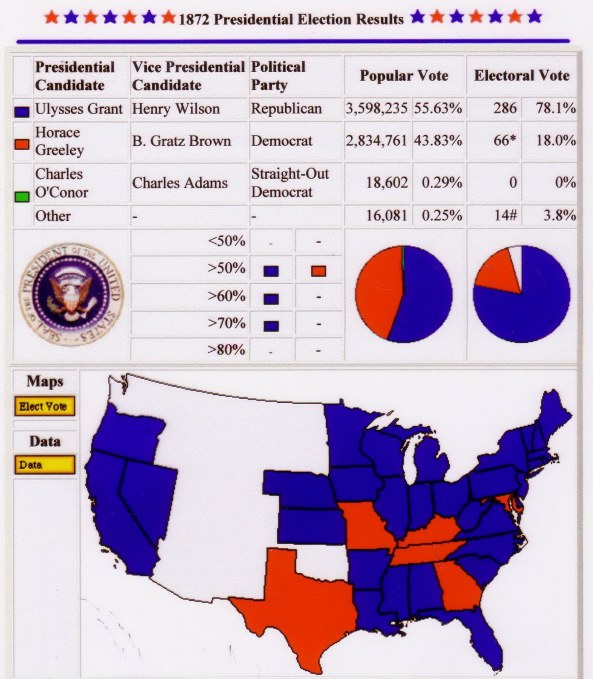
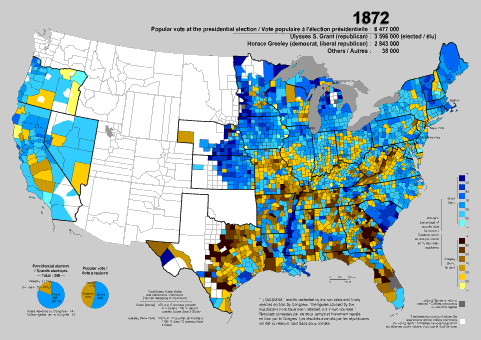
The 1872 election, and county-by-county results (Grant in blue, Greeley in yellow/brown)
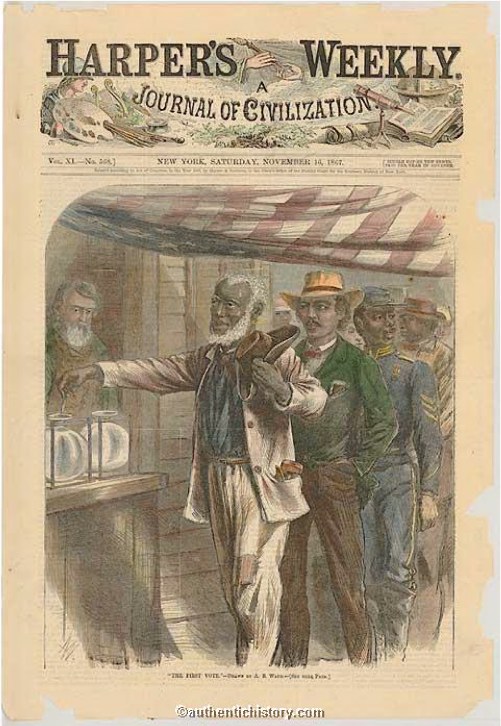
"The First Vote"-- a former slave votes for the first time
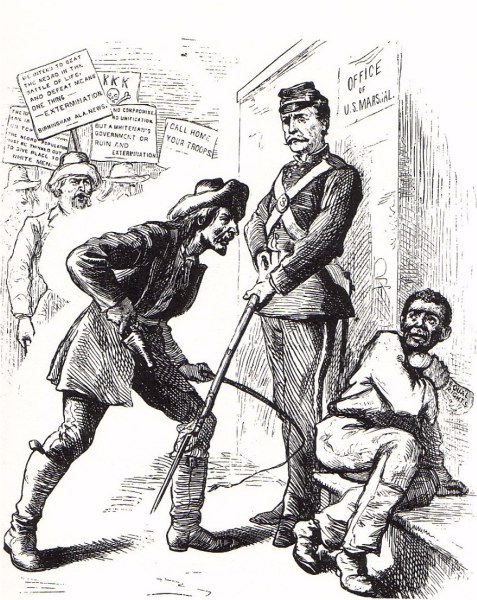
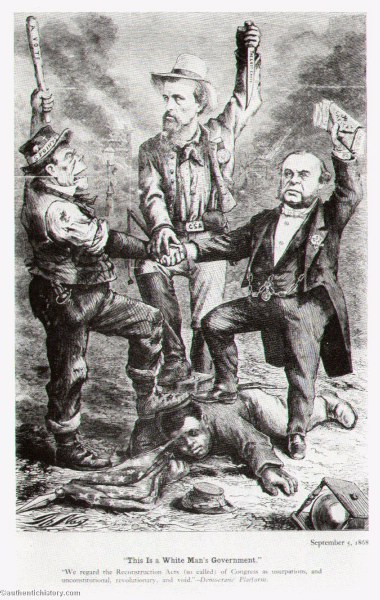
Federal troops defending freedmen from the Klan, and a cartoonist's views of the forces combining to intimidate freedmen

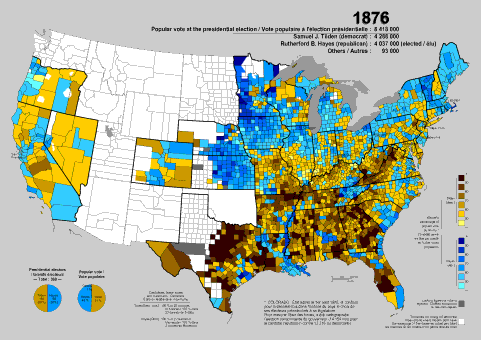
The 1876 election, and county-by-county results (Hayes in blue, Tilden in yellow/brown)
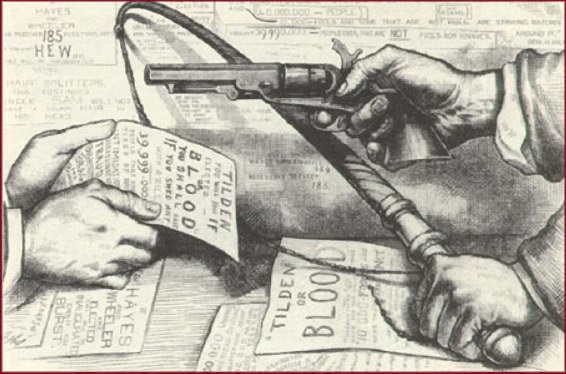
"Tilden or Blood"-- passions ran high due to the controversy over the 1876 election
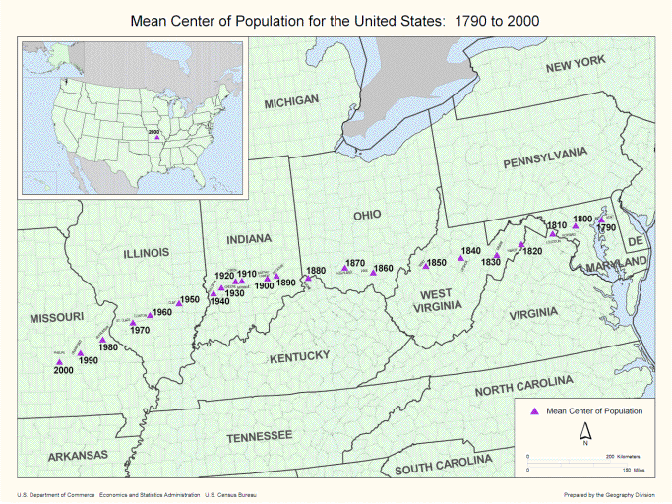
The westward path of population
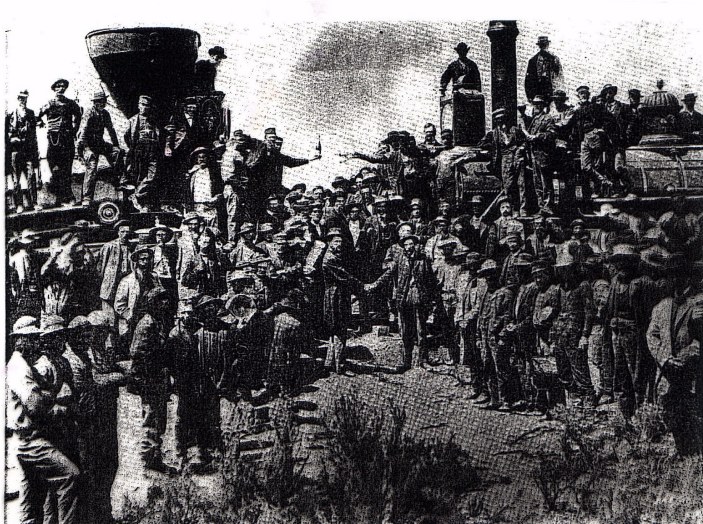
Completing the transcontinental railroad, 1869
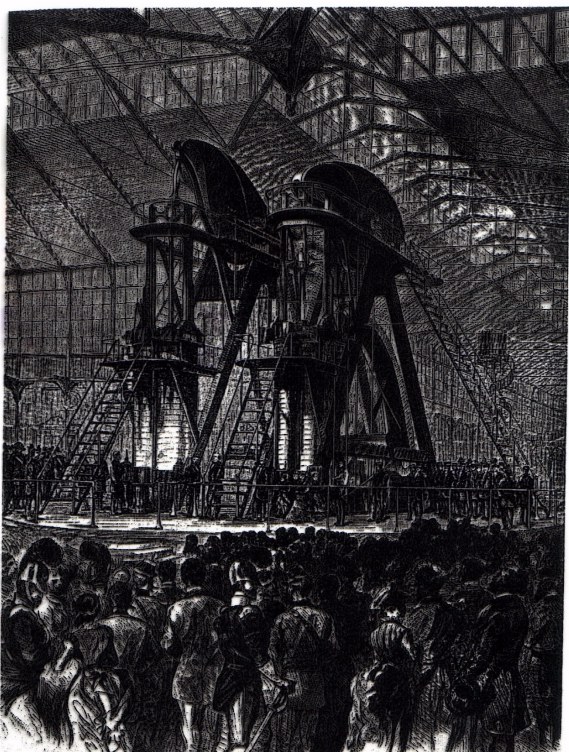
An exhibit at the 1876 Centennial Exhibition